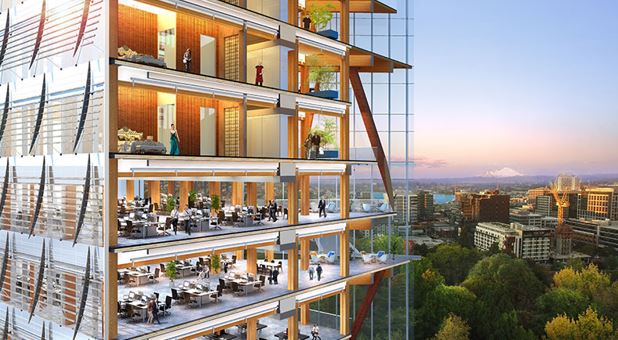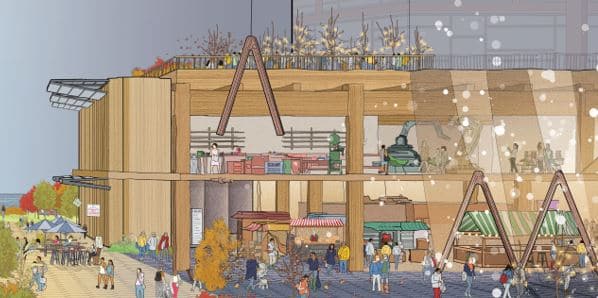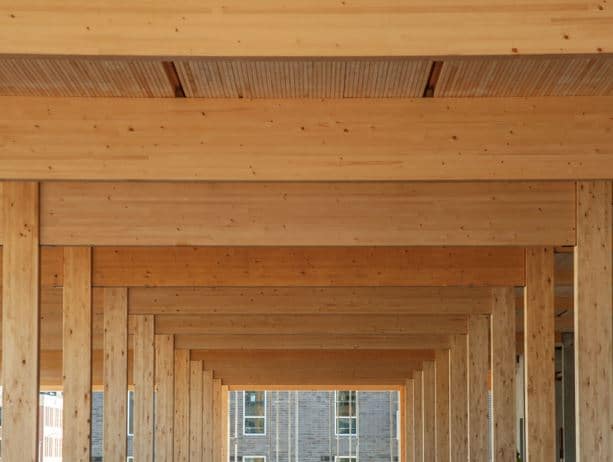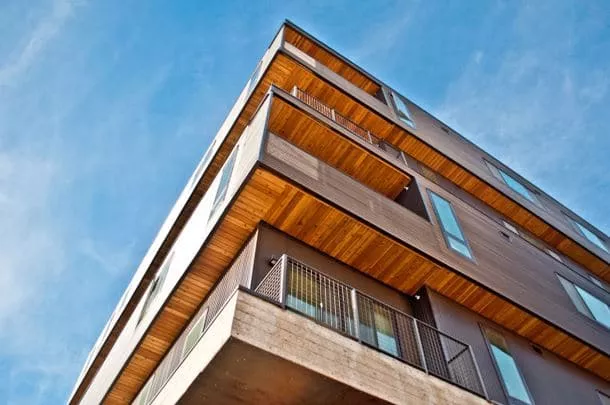Building Up in the U.S.

The ICC approved 14 tall mass timber code change proposals clearing the way for mass timber buildings up to 18 stories tall. Contributed by DLR Group
Wood construction and innovation continues to soar in the U.S., where taller wood buildings are about to become more common. Preliminary voting results released by the International Code Council (ICC) in late 2018 approved 14 tall mass timber code change proposals, clearing the way for their inclusion in the 2021 International Building Code (IBC).
Taken together, the 14 tall mass timber code change proposals create three new types of construction in the United States, setting fire safety requirements and allowable heights, areas, and number of stories for tall mass timber buildings up to 18 stories tall.
Some cities are already on the leading edge of the mass timber movement. Seattle for example is a textbook case in building with wood in dense urban environments. Earlier in 2018, the City of Seattle began accepting permit applications for developments that use mass timber in heavy timber building types up to 18 stories tall.
These allowances are capturing the imaginations of top designers and engineers. DLR Group, Martha Schwartz Partners, Fast+Epp, Swinerton, WoodWorks, and Heartland created a feasibility study called ‘Tall with Timber: A Seattle Mass Timber Tower Case Study’ which presents a 12 story concept design for a mixed-use mass timber tower in Seattle.
It’s clear that the mass timber movement is growing as U.S. building codes evolve to include safe, sustainable and versatile ways of building up.










